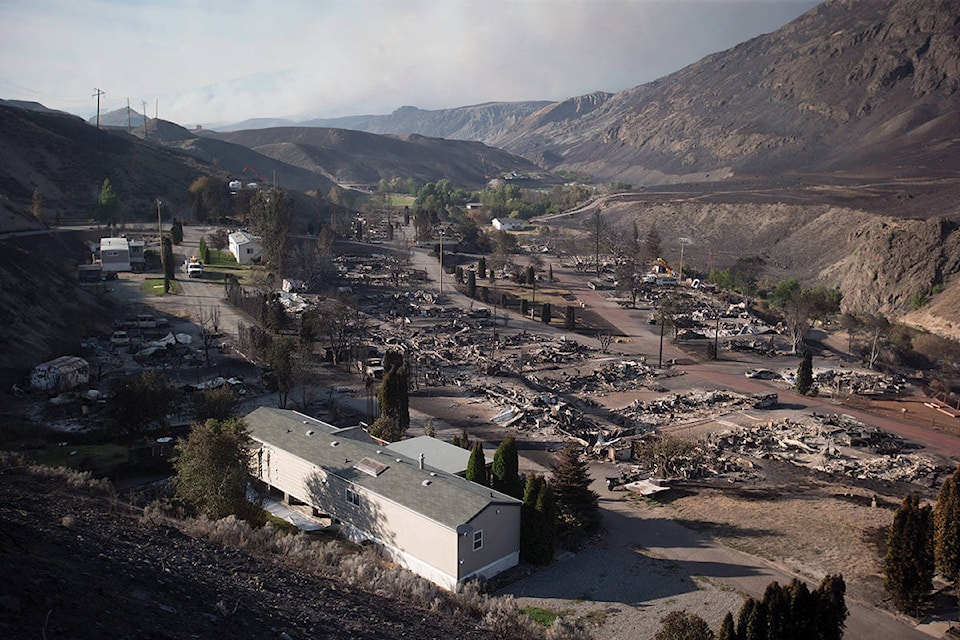KAMLOOPS, B.C. — Residents of Cache Creek, B.C., are thrilled to be heading home after being rushed out by a fast-moving wildfire, but fear an uphill battle in repairing the community’s tourism economy.
Lisa Balouch, manager of the Sunset Motel, says the loss of 11 days of visitors is significant, not only to hotels but also to restaurants, gas stations and other businesses dependent on tourists.
“We had people coming from Britain, Switzerland, Austria, Germany, all across Canada, the U.S.,” she said in an interview from Venables Valley, a short drive from Cache Creek.
“We’re in the midst of our really busy season. When you go from having a motel full of people every night and then nothing … So many people depended on those tourists coming through for money. Not only did they lose that money, but now they have to spend money doing cleanup.”
More than 40,000 people remain out of their homes as 155 wildfires burn across the province. Cache Creek, located in the province’s Interior with a population of about 1,000, was the first major community to be evacuated after the wildfires broke out July 7.
Officials said while the 520-square-kilometre Ashcroft fire continues to grow and burn out of control, the imminent threat to Cache Creek has diminished and residents can return starting at 3 p.m. Tuesday. But the village will remain on evacuation alert, meaning people must be prepared to leave again at a moment’s notice.
Mayor John Ranta said the fire within Cache Creek destroyed two airport hangars and one house at the airport, as well as a few outbuildings in the south end of town. Most of the Boston Flats trailer park south of Cache Creek was also demolished by fire, he said.
The village grew because it’s at the junction of the main north-south transit corridor, Highway 97, and the Trans-Canada Highway, he said.
“Those businesses depend on being open as much as possible in the summer season, in order to generate sufficient revenues to stay open the rest of the year round,” Ranta said.
“It is a huge impact on local area businesses when there’s an evacuation in Cache Creek and we’re hopeful that we can invite the rest of British Columbia and beyond back into the community in very short order.”
It had been a difficult year for Cache Creek even before the wildfires. The village was hit with massive flooding in May and the fire chief, 58-year-old Clayton Cassidy, was swept away by rushing waters.
Ranta said the community has shown remarkable resilience.
“The people in Cache Creek, I think, are prepared to step up and work shoulder to shoulder with their neighbours,” he said. “They’ve demonstrated that time and again, and I don’t think this will be any different.”
But allowing people to return home safely after days of evacuation is no easy task, said Al Richmond, chairman of the Cariboo Regional District.
Richmond said the district has hit logistical snags as it prepares to allow the re-entry of residents of 100 Mile House and the surrounding area.
“We’re beginning to look at how we can bring you folks home,” he told a public meeting of evacuees gathered in Kamloops on Monday night.
“Now, I don’t want you to believe that means you’re coming home tomorrow or at the end of the week. There are many things that have to be done.”
For example, in several communities, the power was off for days. The Canadian Red Cross has said spoiled food is a hazardous material, so hundreds of refrigerators and freezers will have to be thrown out and the district needs to find a place to put them.
“If you look at (108 Mile Ranch) alone, 1,160 homes, times how many freezers, times how many fridges. Those are some of the logistics of taking you home,” Richmond said.
The district issued a statement that said a comprehensive assessment will be conducted to ensure the integrity of all infrastructure and utilities, such as water, sewer, roads, hydro, natural gas and emergency telephone services.
Priority services will also be established, including emergency health-care services, waste management services and security, it said.
Wildfires have burned more than 3,200 square kilometres of the province so far this year.
